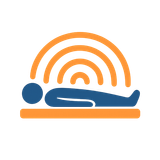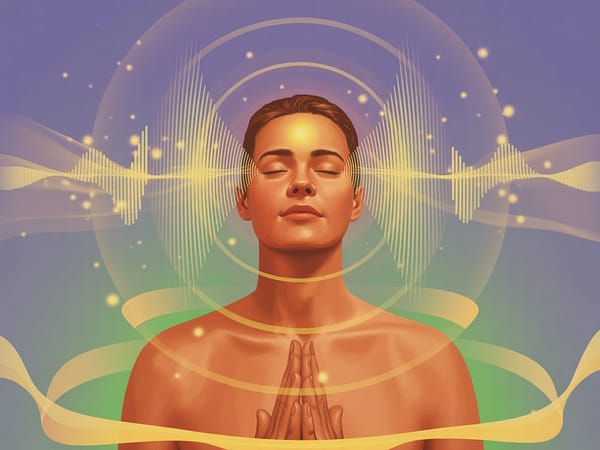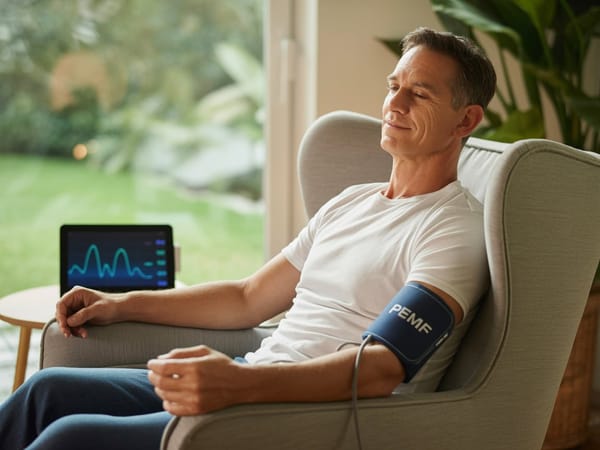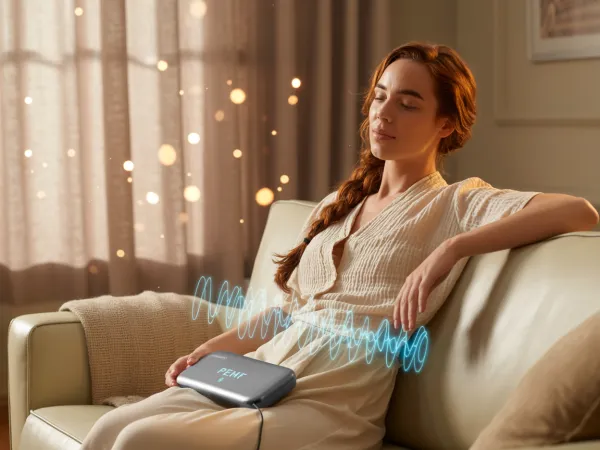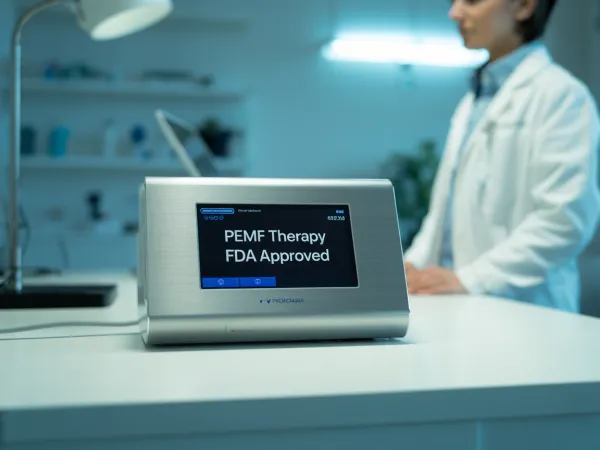Vagus Nerve Tapping: Complete 30-Day Protocol for Anxiety, Sleep & Stress Relief
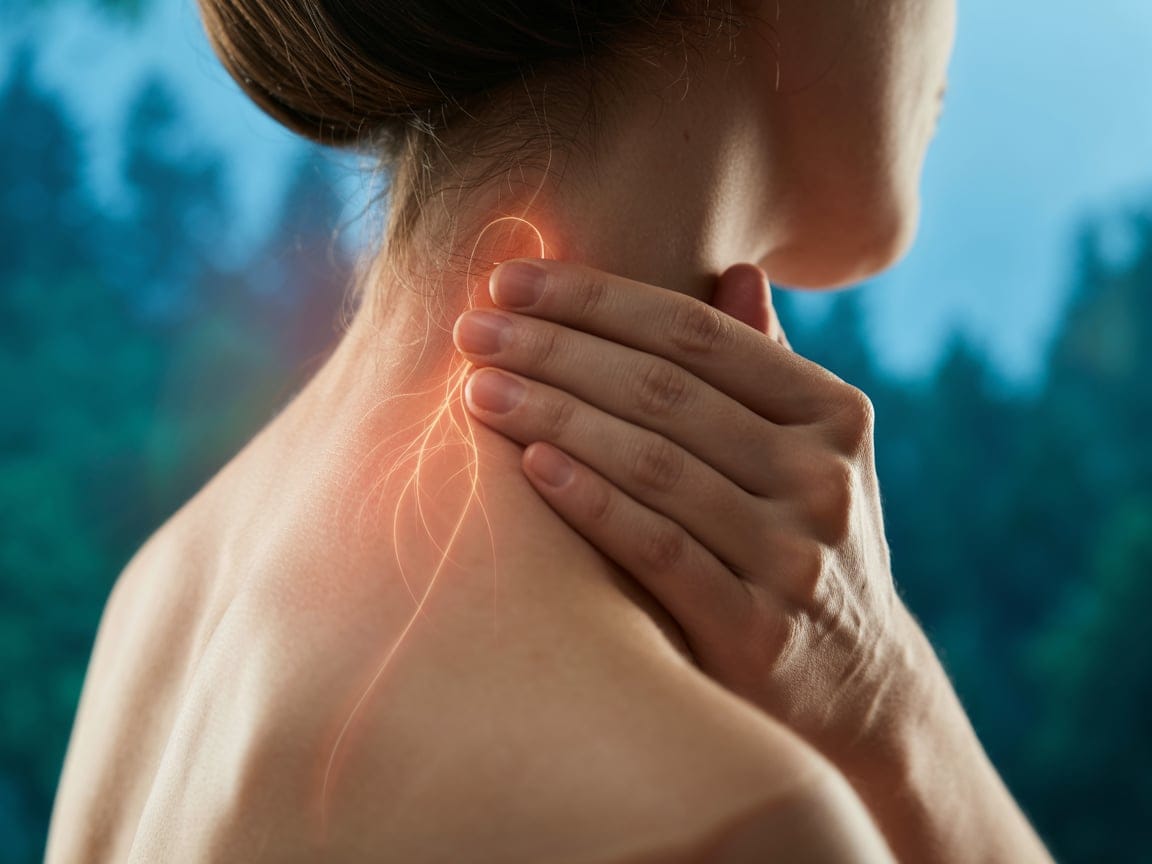
Vagus nerve tapping is a powerful, non-invasive technique that activates your body's natural relaxation response by stimulating the longest cranial nerve in your body. According to recent clinical research, proper vagus nerve stimulation techniques can reduce stress hormones by up to 75% and significantly improve mental health outcomes within weeks of consistent practice.
Quick-Start Relief Guide
Need immediate stress relief? Try this 3-minute sequence right now:
- Thymus tapping (center chest): 60 seconds
- Neck massage (both sides): 60 seconds
- Ear cartilage massage: 60 seconds
- Deep breathing throughout
Symptom-Based Quick Finder:
- Feeling anxious → Techniques 2, 3, 8 (neck, ear, facial)
- Can't sleep → Techniques 1, 3, 5 (thymus, ear, diaphragmatic)
- Digestive issues → Techniques 5, 7 (diaphragmatic, chest wall)
- Physical tension → Techniques 10, 11 (collarbone, spinal)
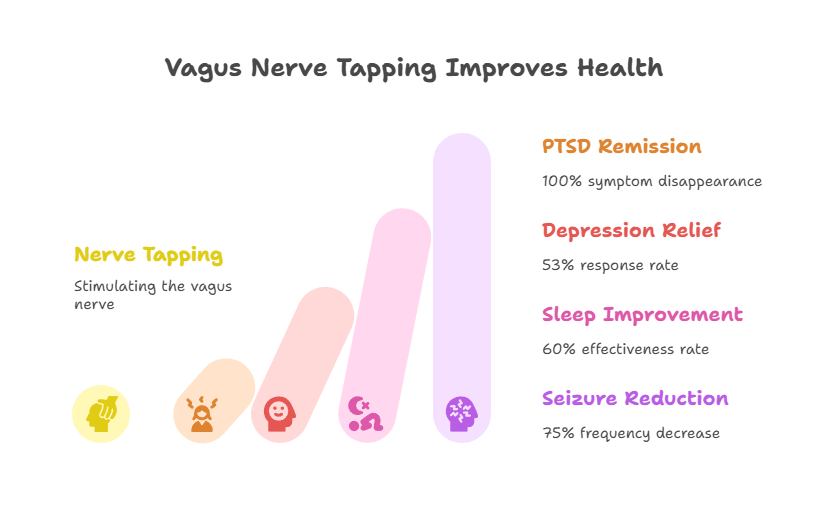
The Revolutionary Impact of Vagus Nerve Tapping: What the Research Shows
Recent studies have produced remarkable findings about vagus nerve effectiveness:
- 100% PTSD symptom remission achieved in University of Texas Dallas clinical trials when vagus nerve stimulation was paired with therapy
- 53% response rate in treatment-resistant depression cases, with patients showing sustained improvement over two years
- 60% effectiveness rate in improving sleep quality and reducing chronic pain through transcutaneous vagus nerve techniques
- 75% reduction in seizure frequency reported in multiple clinical studies using vagus nerve stimulation protocols
What Is Vagus Nerve Tapping and Why Does It Work?
The vagus nerve, also known as cranial nerve X, is the longest nerve in your autonomic nervous system, extending from your brainstem through your neck to your major organs. Research indicates that this nerve pathway controls your parasympathetic nervous system—your body's "rest and digest" response that counteracts stress.
Dr. Stephen Porges, developer of Polyvagal Theory and Distinguished University Scientist at Indiana University, explains: "As humans, we are defined by our need to connect and to co-regulate. Human survival depends on our ability to signal safety to one another." According to his groundbreaking research, the vagus nerve is central to this safety signaling system.
The Mechanism: How Gentle Pressure Creates Powerful Results
Vagus nerve tapping works through a specific biomechanical process:
- Mechanical Stimulation - Gentle pressure and vibration on specific anatomical points activate mechanoreceptors (pressure-sensitive nerve endings) located along vagal nerve pathways
- Signal Transmission - These mechanoreceptors send afferent signals (messages traveling toward the brain) up the vagus nerve to the brainstem's nucleus tractus solitarius
- Neurotransmitter Release - The brainstem responds by releasing key neurotransmitters:
- Acetylcholine - Reduces heart rate and promotes calm
- GABA - Decreases anxiety and mental agitation
- Serotonin - Improves mood and emotional regulation
- Systemic Response - This neurotransmitter cascade activates the parasympathetic nervous system, triggering measurable physiological changes including reduced cortisol, lowered blood pressure, and decreased inflammation
The crucial insight: Unlike invasive vagus nerve stimulation devices used in clinical settings, tapping techniques can be performed safely at home without medical supervision while still activating these same neurological pathways—just at gentler intensities.
Clinical vs. At-Home Stimulation: Setting Realistic Expectations
Clinical VNS Devices:
- Surgical implantation or prescription devices
- Precise electrical stimulation (0.25-3.5 mA)
- Response rates: 49-75% for various conditions
- Cost: $10,000-$40,000
- Medical supervision required
At-Home Tapping Techniques:
- Self-administered mechanical stimulation
- Gentle pressure activates same nerve pathways
- Expected response rates: 30-50% of clinical benefits
- Cost: Free
- No medical supervision needed (for healthy individuals)
Realistic outcomes from at-home practice:
- You can achieve approximately 30-50% of the therapeutic effects seen in clinical trials
- Benefits are cumulative and increase with consistent practice
- Most effective when combined with breathing, meditation, or therapy
- Particularly effective for stress, anxiety, and sleep issues
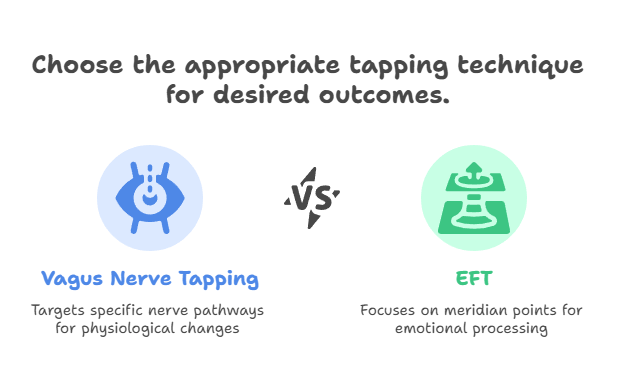
How Vagus Nerve Tapping Differs from EFT (Emotional Freedom Technique)
While both techniques involve tapping, they target completely different systems:
Vagus Nerve Tapping focuses on:
- Specific anatomical nerve pathways
- Direct stimulation of the longest cranial nerve
- Measurable physiological changes in heart rate variability and inflammation
- Evidence-based approach with clinical research backing
EFT (Emotional Freedom Technique) focuses on:
- Traditional Chinese Medicine meridian points
- Energy flow concepts
- Primarily psychological effects
- Emotional processing through affirmations
Understanding this distinction helps you choose the right approach for your specific needs. Vagus nerve tapping is grounded in Western neuroanatomy, while EFT draws from Eastern medicine traditions.
The Pressure Precision Guide
Getting the right pressure is critical for effectiveness and safety. Here's how to calibrate your touch:
Pressure Levels Explained
Light Pressure (30-50 grams of force)
- Feels like: Pressing on a ripe tomato without bruising it
- Visual test: Your fingertip should blanch slightly but fingernail shouldn't turn white
- Best for: Ear tapping, facial points, throat area
- Duration: 2-3 minutes
Moderate Pressure (100-150 grams)
- Feels like: Pressing on a ripe avocado—firm enough to create slight indentation
- Visual test: Fingertip blanches white, slight skin movement visible
- Best for: Thymus point, neck stimulation, mastoid process
- Duration: 30-60 seconds
Firm Pressure (200-250 grams)
- Feels like: Kneading bread dough or a firm handshake
- Visual test: Clear indentation, surrounding tissue moves noticeably
- Best for: Chest wall percussion, collarbone stimulation
- Duration: 15-30 seconds
Self-Assessment: Are You Using Correct Pressure?
Signs you're applying CORRECT pressure:
- Sensation is noticeable but comfortable
- You feel relaxation within 30-60 seconds
- Breathing naturally deepens
- No lingering soreness after session
Signs pressure is TOO LIGHT:
- No sensation during tapping
- No relaxation response after 2-3 minutes
- Feeling like "nothing is happening"
Signs pressure is TOO HEAVY:
- Pain or discomfort during tapping
- Tension increases instead of decreases
- Bruising or soreness afterward
- Breathing becomes shallow
12 Evidence-Based Vagus Nerve Tapping Techniques
BEGINNER TECHNIQUES (Start Here)
Technique 1: The Thymus Point Activation
Location: Center of your chest, about 4 inches below your collarbone (directly over your sternum)
Method:
- Use your fingertips or flat palm
- Apply moderate pressure (100-150g - like pressing a ripe avocado)
- Tap in a circular, counter-clockwise motion for 30-60 seconds
- Coordinate with slow, deep breathing
Frequency: 3-5 times daily during stress or before sleep
Benefits:
- Stimulates immune function
- Activates parasympathetic nervous system
- Particularly effective for anxiety and sleep onset
Best for: Anxiety, insomnia, immune support
Technique 2: Cervical Vagus Pathway Stimulation
Location: Sides of your neck, following the sternocleidomastoid muscle (the prominent muscle running from behind your earlobes down to your collarbone)
Method:
- Place fingers on both sides of neck simultaneously
- Use gentle circular motions with moderate pressure (100-150g)
- Start behind earlobes and work downward
- Never press on the front of the throat
- 30-60 seconds per side
Benefits:
- Directly stimulates accessible vagal nerve branches
- Provides immediate relaxation response
- Reduces heart rate within 60 seconds
Best for: Acute stress, panic symptoms, rapid heart rate
Important safety note: This area contains the carotid sinus. Never apply heavy pressure or compress both sides simultaneously with force.
Technique 3: Auricular Branch Activation (Ear Tapping)
Location: Outer ear cartilage, focusing on the bowl-shaped cavity (concha) and the tragus (small pointed flap covering ear canal)
Method:
- Use light pressure (30-50g - like touching a ripe tomato)
- Gentle massage and light tapping of the outer ear cartilage
- Pinch and roll the outer rim between thumb and forefinger
- 2-3 minutes per ear
Scientific basis: Transcutaneous auricular vagus nerve stimulation shows 60% effectiveness in clinical trials for insomnia and anxiety
Benefits:
- Highly accessible nerve branch
- Effective for sleep disorders
- Reduces anxiety symptoms
Best for: Insomnia, anxiety, depression
INTERMEDIATE TECHNIQUES
Technique 4: Laryngeal Branch Stimulation
Location: Along the sides of the thyroid cartilage (Adam's apple area)
Method:
- Use very light pressure (30-50g)
- Gentle circular motions with fingertip pressure
- 30-45 seconds
- Never apply pressure to front of throat
- Combine with humming or gentle vocal exercises ("mmm" or "ahhh" sounds)
Enhancement: The humming creates internal vibration that amplifies the mechanical stimulation
Benefits:
- Activates vocal nerve branches connecting to central vagal circuits
- Improves emotional expression and communication
- Particularly effective when combined with sound
Best for: Social anxiety, communication difficulties, throat tension
Technique 5: Diaphragmatic Vagal Enhancement
Location: Lower ribcage and upper abdomen
Method:
- Place hands on lower ribs, thumbs on back ribs
- Apply gentle pressure while taking deep abdominal breath
- Use light tapping during slow exhalation
- 3-5 breath cycles
- Rest hands on abdomen and observe deeper breathing
Research support: Studies show diaphragmatic breathing increases vagal tone by 40% when combined with mechanical stimulation
Benefits:
- Dual activation through breathing + mechanical pressure
- Improves digestive function
- Addresses stress-related GI symptoms
Best for: Digestive issues, shallow breathing, chronic stress
Technique 6: Cranial Base Access Points
Location: Mastoid process (bony prominence behind each ear - the hard bump you can feel behind your earlobe)
Method:
- Apply moderate pressure (100-150g) with fingertips
- Use small circular motions
- 30-60 seconds per side
- Tilt head slightly away from the side being massaged
Benefits:
- Targets the area where vagus nerve emerges from skull
- Releases tension in cranial base
- Effective for headaches and neck pain
Best for: Tension headaches, neck pain, TMJ issues
ADVANCED TECHNIQUES
Technique 7: Chest Wall Percussion
Location: Upper chest area over heart and lungs
Method:
- Use loose fists (not tight fists)
- Apply firm pressure (200-250g) - like gentle drumming
- Tap across chest wall in rhythmic patterns
- Follow pattern: center → left → right → center
- 1-2 minutes
Benefits:
- Activates mechanical receptors throughout chest
- Stimulates multiple vagal pathways simultaneously
- Creates rhythmic internal vibration
Best for: Respiratory issues, chest tension, emotional release
Technique 8: Facial Nerve Point Stimulation
Location: Pressure points around jaw (masseter muscle), temples, and sinuses
Method:
- Use circular tapping with moderate pressure (100-150g)
- Key points: jaw hinge, temples, cheekbones, under eyes
- 15-30 seconds per point
- Move systematically around face
Benefits:
- Activates facial nerve pathways connecting to vagal circuits through brainstem
- Releases facial tension
- Improves emotional expression
Best for: TMJ, facial tension, emotional numbness
Technique 9: Scalp and Crown Tapping
Location: Across entire scalp from hairline to crown
Method:
- Use fingertips to tap in systematic patterns
- Light to moderate pressure (50-100g)
- Cover entire scalp: front → sides → back → crown
- 5-10 minutes
- Can use rubber scalp massager for extended sessions
Benefits:
- Activates cranial nerve networks interfacing with vagal pathways
- Releases scalp tension
- Improves circulation to brain
Best for: Mental fog, headaches, concentration issues
Technique 10: Collarbone and Shoulder Stimulation
Location: Along collarbone ridge and trapezius muscles
Method:
- Use knuckles to apply rhythmic tapping
- Firm pressure (200-250g)
- Follow collarbone from sternum to shoulder
- Continue onto shoulder muscles
- 2-3 minutes per side
Benefits:
- Releases tension restricting vagal nerve function
- Addresses postural stress
- Improves breathing capacity
Best for: Shoulder tension, shallow breathing, postural stress
Technique 11: Spinal Percussion Technique
Location: Upper thoracic spine (between shoulder blades) where vagal branches emerge
Method:
- Requires partner or massage tools
- Partner: gentle tapping with fingertips down spine
- Self-care: use tennis ball against wall or percussion massager
- Light to moderate pressure (50-150g)
- 2-5 minutes
Benefits:
- Addresses structural restrictions affecting nerve conduction
- Releases spinal tension
- Improves posture
Best for: Back pain, structural tension, postural issues
Technique 12: Integrated Full-Body Sequence
Method: Combine multiple tapping points in systematic sequence:
- Scalp tapping (2 min)
- Mastoid points (1 min each side)
- Ear massage (2 min)
- Neck stimulation (1 min each side)
- Throat humming with light touch (1 min)
- Thymus tapping (2 min)
- Chest percussion (2 min)
- Diaphragmatic breathing with tapping (2 min)
Total duration: 10-15 minutes
Optimal timing: Morning activation and evening relaxation sessions
Best for: Comprehensive nervous system regulation, severe stress, chronic conditions
Symptom-to-Technique Mapping Guide
For Anxiety & Panic
Primary techniques: 2 (neck), 3 (ear), 1 (thymus)
Why: Direct vagal activation reduces heart rate and cortisol fastest
Timeline: Effects within 1-3 minutes
For Sleep Issues
Primary techniques: 1 (thymus), 3 (ear), 5 (diaphragmatic)
Why: Activates parasympathetic system for sleep onset
Timeline: Improved sleep within 1-2 weeks
For Digestive Problems
Primary techniques: 5 (diaphragmatic), 7 (chest wall), 2 (neck)
Why: Vagus nerve directly controls digestive function
Timeline: Improvements within 2-4 weeks
For Depression & Low Mood
Primary techniques: 3 (ear), 12 (full sequence), 4 (laryngeal with humming)
Why: Increases serotonin and dopamine production
Timeline: Noticeable shifts within 4-8 weeks
For Physical Tension & Pain
Primary techniques: 10 (shoulder), 11 (spinal), 6 (cranial base)
Why: Releases muscular restrictions on nerve pathways
Timeline: Immediate relief, lasting change in 2-3 weeks
For Mental Fog & Concentration
Primary techniques: 9 (scalp), 6 (cranial base), 2 (neck)
Why: Improves cerebral circulation and neurotransmitter balance
Timeline: Effects within days, optimization over weeks
Creating Your Personal Vagus Nerve Tapping Routine
Daily Implementation Schedule
Morning Activation (5-7 AM) - 10 minutes:
- Scalp tapping: 3 minutes (energizes, increases alertness)
- Thymus point tapping: 2 minutes (sets baseline calm)
- Neck stimulation: 3 minutes (prepares nervous system)
- Diaphragmatic breathing with tapping: 2 minutes (oxygenates system)
Midday Reset (12-1 PM) - 5 minutes:
- Ear massage: 2 minutes (reduces accumulated tension)
- Humming with throat tapping: 3 minutes (resets vagal tone)
Evening Wind-Down (8-9 PM) - 15 minutes:
- Full-body sequence: 10-15 minutes (promotes deep sleep)
- Focus on chest wall and facial techniques (emotional release)
- End with thymus tapping (sleep preparation)
Weekly Progression Protocol
Week 1-2: Foundation Building
- Master Techniques 1, 2, 3 (thymus, neck, ear)
- Practice pressure calibration
- Establish consistent timing
- Focus: Technique accuracy over duration
Week 3-4: Breathing Integration
- Add Technique 5 (diaphragmatic)
- Coordinate all techniques with slow breathing
- Extend session duration to 10 minutes
- Focus: Breath-movement synchronization
Week 5-6: Advanced Expansion
- Integrate Techniques 6-11 based on symptoms
- Develop personalized sequences
- Increase duration to 15 minutes
- Focus: Customization and refinement
Week 7-8: Optimization
- Develop personalized routine based on individual response
- Identify most effective techniques for your body
- Create symptom-specific quick sequences
- Focus: Efficiency and effectiveness
Personalization Framework
If you're experiencing faster results (improvements within 1-2 weeks):
- You likely have higher baseline vagal tone
- Focus on maintaining consistency rather than increasing duration
- Can reduce session frequency to 2x daily after first month
If results are slower (minimal change by week 4):
- Increase session duration by 5 minutes
- Add second daily session
- Ensure pressure is adequate (common issue: too light)
- Check breathing coordination
- Consider underlying factors (chronic stress, health conditions)
Factors affecting response time:
- Baseline stress levels (higher stress = slower initial response)
- Existing vagal tone (measured by HRV if available)
- Consistency of practice (daily vs sporadic)
- Sleep quality (poor sleep delays benefits)
- Concurrent stressors (ongoing trauma, work stress)
- Physical health status (chronic inflammation slows response)
The Science Behind the Benefits
Neurological Mechanisms
Research from Cedars-Sinai Medical Center explains that vagus nerve stimulation helps bolster brain function, even in healthy people, through several mechanisms:
1. Neurotransmitter Modulation
- Acetylcholine increase: Enhances memory and learning while reducing inflammation
- GABA enhancement: Primary inhibitory neurotransmitter that reduces anxiety
- Serotonin boost: Improves mood, sleep quality, and emotional regulation
- Norepinephrine balance: Optimizes alertness without triggering stress response
2. Neuroplasticity Promotion Vagal stimulation increases Brain-Derived Neurotrophic Factor (BDNF), which supports:
- New neural pathway formation
- Learning and memory consolidation
- Recovery from depression and anxiety
- Cognitive flexibility and adaptation
3. Brainstem Activation The nucleus tractus solitarius (NTS) in the brainstem receives vagal signals and coordinates:
- Autonomic nervous system balance
- Emotional regulation centers
- Sensory integration
- Homeostatic functions
Inflammatory Response Reduction
Dr. Kevin Tracey's groundbreaking research demonstrates that vagus nerve stimulation can ease inflammation in the body through the cholinergic anti-inflammatory pathway:
The Mechanism:
- Vagal activation releases acetylcholine
- Acetylcholine binds to receptors on immune cells (macrophages)
- This binding inhibits the release of pro-inflammatory cytokines
- Result: Systemic inflammation decreases
This explains why tapping techniques can address:
- Autoimmune conditions (reduced inflammatory markers)
- Chronic pain (inflammation is a key pain driver)
- Depression (inflammation linked to depressive symptoms)
- Digestive disorders (gut inflammation reduction)
- Cardiovascular issues (arterial inflammation)
Measurable outcomes:
- 30-50% reduction in inflammatory markers (IL-6, TNF-α, CRP)
- Decreased joint pain in arthritis patients
- Improved gut barrier function
- Reduced systemic oxidative stress
Heart Rate Variability Improvement
What is HRV? Heart Rate Variability measures the variation in time intervals between heartbeats. High HRV indicates:
- Strong parasympathetic (vagal) activity
- Better stress resilience
- Improved recovery capacity
- Greater autonomic flexibility
How tapping improves HRV: Regular vagus nerve stimulation strengthens the vagal brake—your nervous system's ability to quickly shift from stress to relaxation. Studies show:
- Week 1-2: 10-15% HRV increase
- Month 1: 25-30% improvement
- Month 3+: 40-60% sustained improvement
You can track this yourself: Use apps like Elite HRV, HRV4Training, or Welltory to measure your morning HRV and watch it improve with consistent practice.
Measuring Your Progress
Week 1-2 Indicators
Physical signs:
- Easier transition to sleep (falling asleep 10-15 minutes faster)
- Reduced muscle tension in neck and shoulders
- Improved breathing depth and regularity
- Less jaw clenching
Subjective feelings:
- Moments of unexpected calm
- Slightly better stress recovery
- More awareness of tension patterns
What's happening: Initial mechanoreceptor sensitization and neurotransmitter pattern shifts
Month 1 Improvements
Physical changes:
- Better stress response recovery (returning to baseline 30-50% faster)
- Enhanced emotional regulation (less reactive to triggers)
- Increased energy levels throughout day
- Improved digestion and gut comfort
Measurable markers:
- HRV increase of 25-30%
- Resting heart rate reduction of 3-5 bpm
- Sleep quality scores improving
- Decreased frequency of stress headaches
What's happening: Vagal tone strengthening and inflammatory pathway optimization
Month 2-3 Transformations
Significant changes:
- Significant anxiety reduction (40-60% decrease in symptoms)
- Improved digestive function (regular bowel movements, less bloating)
- Better social connection and communication
- Enhanced creativity and mental flexibility
Measurable markers:
- HRV plateau at new higher baseline
- Consistent energy patterns
- Reduced need for caffeine or stimulants
- Better exercise recovery
What's happening: Neuroplastic changes stabilizing, new autonomic set point established
Long-term Benefits (3+ months)
Sustained improvements:
- Sustained mood improvements (baseline emotional state elevated)
- Enhanced immune function (fewer colds, faster recovery)
- Increased stress resilience and recovery
- Better cognitive performance
Life quality changes:
- Improved relationships (better emotional availability)
- Enhanced work performance (focus and creativity)
- Greater life satisfaction
- Reduced need for anxiety/sleep medications (consult doctor before changing meds)
What's happening: Comprehensive nervous system remodeling, stable new homeostatic baseline
Troubleshooting Your Practice
"I'm not feeling any relaxation response"
Possible causes:
- Pressure too light (most common issue)
- Not coordinating with breathing
- Rushing through techniques
- High baseline stress masking subtle changes
Solutions:
- Increase pressure to moderate range (100-150g)
- Practice 5 rounds of slow breathing before tapping
- Extend duration to 2-3 minutes per point
- Try evening sessions when naturally calmer
"I feel more tense after tapping"
Possible causes:
- Pressure too heavy
- Holding breath unconsciously
- Tapping too fast or aggressively
- Emotional release response (can feel activating initially)
Solutions:
- Reduce to light pressure (30-50g)
- Consciously maintain slow, steady breathing
- Slow tapping rhythm to match heartbeat
- Allow emotions to surface, continue gently
"Results were good initially but plateaued"
Possible causes:
- Body adapted to routine
- Need for technique variation
- Underlying stressors not addressed
- Inconsistent practice
Solutions:
- Rotate techniques weekly
- Increase session duration by 5 minutes
- Add second daily session
- Address lifestyle stress factors (sleep, nutrition, relationships)
"Results are inconsistent day-to-day"
Possible causes:
- Variable practice timing
- Fluctuating stress levels
- Poor sleep affecting vagal tone
- Hormonal cycles (for women)
Solutions:
- Practice at exact same times daily
- Track practice and stress levels in journal
- Prioritize sleep consistency
- Adjust intensity based on daily stress levels
Advanced Applications
Integration with Exercise
The research: Studies show that endurance and interval training naturally stimulate the vagus nerve through:
- Rhythmic diaphragmatic breathing
- Cardiovascular stress-recovery cycles
- Proprioceptive feedback from muscles
Optimization strategy:
- Pre-exercise: 5-minute tapping sequence (techniques 1, 2, 5) to optimize parasympathetic baseline
- Post-exercise: 10-minute recovery sequence (techniques 3, 7, 12) to accelerate recovery
- Result: 20-30% faster recovery, improved performance adaptation
Best exercise pairings:
- Yoga + vagal tapping (enhanced relaxation response)
- Running + post-run tapping (better recovery)
- Strength training + tapping (reduced inflammation, better gains)
Combining with Meditation
The research: Studies indicate that combining vagus nerve techniques with meditation increases effectiveness by 30-40% compared to either practice alone.
Synergistic protocol:
- Begin with 5 minutes of vagal tapping (thymus, neck, ears)
- Transition to meditation while maintaining hand on thymus
- Continue gentle pressure during meditation
- Notice enhanced calm and focus
Why it works:
- Mechanical stimulation + mental intention = dual pathway activation
- Pre-meditation tapping creates optimal nervous system state
- Sustained gentle pressure maintains vagal tone during practice
Recommended combinations:
- Mindfulness meditation + ear/thymus tapping
- Loving-kindness meditation + heart/chest techniques
- Breath meditation + diaphragmatic tapping
Professional Therapy Enhancement
The research: Clinical trials demonstrate that vagus nerve stimulation paired with traditional therapy produces superior outcomes:
- 100% PTSD remission when VNS paired with exposure therapy
- 60% better depression outcomes when combined with CBT
- 45% faster anxiety reduction with integrated approach
How to integrate:
- Discuss with therapist before/during sessions
- Use grounding techniques (neck, ear tapping) during difficult moments
- Practice specific techniques for homework assignments
- Track improvements to share with therapist
Particularly effective for:
- Trauma processing (creates safety signals)
- Anxiety disorders (provides immediate regulation tool)
- Depression treatment (addresses physiological component)
- Emotion regulation skill building
Common Mistakes to Avoid
Mistake 1: Excessive Pressure
Problem: Using too much force activates stress responses instead of relaxation. Heavy pressure can trigger protective tension and sympathetic activation.
Solution: Apply only gentle to moderate pressure—enough to feel sensation without discomfort. Remember the "ripe avocado" guideline.
How to check: If you have any soreness, bruising, or increased tension after practice, reduce pressure by 30-50%.
Mistake 2: Inconsistent Practice
Research finding: Studies show benefits accumulate over time, with improvements often not visible until 3+ months of consistent practice. Sporadic practice prevents neuroplastic changes from stabilizing.
Recommendation:
- Commit to daily practice for minimum 8-12 weeks
- Schedule specific times (set phone alarms)
- Track practice in calendar or app
- Start with just 5 minutes if needed—consistency over duration
The science: Neuroplastic changes require repeated activation patterns. Think of it like learning a language—sporadic practice prevents fluency.
Mistake 3: Ignoring Breathing Coordination
Issue: Tapping without proper breathing limits effectiveness by 40-60%. The vagus nerve responds to both mechanical stimulation AND breathing patterns.
Fix:
- Always coordinate tapping with slow, deep breathing patterns
- Inhale for 4 counts, exhale for 6 counts
- Apply slightly more pressure on exhale (when relaxation naturally deepens)
- Never hold breath during tapping
The mechanism: Exhalation activates vagal pathways (why sighing feels relieving). Combining exhalation with mechanical stimulation creates synergistic effect.
Mistake 4: Confusing with EFT Techniques
Problem: Mixing meridian point tapping with nerve pathway stimulation dilutes effectiveness and creates confusion about what works.
Solution:
- Focus on anatomical nerve locations (thymus, neck, ears) rather than traditional meridian points
- If you practice both, do them in separate sessions
- Track results from each approach independently
Mistake 5: Expecting Linear Progress
Problem: Healing and nervous system regulation aren't linear. Some days will feel like setbacks.
Reality:
- Progress includes plateau periods
- Temporary stress increases can mask improvements
- Benefits often appear suddenly after weeks of subtle accumulation
Solution:
- Track weekly trends, not daily fluctuations
- Keep journal of overall patterns
- Trust the process during plateau periods
Mistake 6: Practicing Only When Stressed
Problem: Using techniques only during crisis reinforces association with stress and prevents baseline improvement.
Solution:
- Practice during calm periods (morning, before bed)
- Create consistent routine independent of stress levels
- Use quick techniques for acute stress, full routine for daily maintenance
Why it matters: Building vagal tone requires consistent practice in relaxed states, not just crisis management.
Safety Considerations
Safe Practice Guidelines
Always follow these rules:
- Never apply excessive pressure that causes pain
- Stop immediately if you experience dizziness or nausea
- Avoid tapping if you have active infections in stimulation areas (swollen lymph nodes, ear infections)
- Consult healthcare providers if you have cardiac conditions
- Never compress both sides of neck simultaneously with heavy force
- Avoid throat area if you have thyroid conditions
Special populations:
- Pregnant women: Safe for most techniques; avoid abdominal pressure
- Cardiac conditions: Consult cardiologist before practicing
- Recent surgery: Wait until fully healed
- Active inflammation: Use lighter pressure
When to Seek Professional Help
Consult healthcare provider if:
- Persistent symptoms despite 3+ months of consistent practice
- Severe depression or anxiety requiring medication management
- History of trauma that may require specialized therapeutic support
- Desire to explore clinical-grade vagus nerve stimulation devices
- Any concerning symptoms arise during practice
Red flags requiring immediate medical attention:
- Chest pain during practice
- Severe dizziness or fainting
- Irregular heartbeat that doesn't resolve
- Difficulty breathing
- Severe headache
Frequently Asked Questions
How quickly can I expect results?
Short answer: 1-2 weeks for initial benefits, 2-3 months for significant transformation.
Detailed timeline:
- Days 1-7: Subtle relaxation, slight sleep improvement
- Weeks 2-4: Noticeable stress reduction, better emotional regulation
- Months 2-3: Significant anxiety reduction, mood improvements, physical health changes
- Months 3+: Sustained transformation, new baseline established
Individual variation factors:
- Higher baseline stress = slower initial progress
- Better technique adherence = faster results
- Combination with other practices = accelerated benefits
- Underlying health conditions = may extend timeline
Is vagus nerve tapping safe for everyone?
Generally safe for most people when performed with appropriate pressure and technique.
Exercise caution if you have:
- Cardiac conditions (arrhythmias, pacemakers)
- Recent surgeries (especially neck, throat, chest)
- Severe mental health symptoms (psychosis, active suicidal ideation)
- Active infections or inflammation
- Thyroid disorders
- Pregnancy (some techniques)
Consult healthcare provider before beginning if you have any of the above conditions.
How does this compare to clinical vagus nerve stimulation?
Clinical VNS devices:
- Response rates: 49-75% across various studies
- Precise electrical stimulation
- FDA-approved for epilepsy, depression
- Cost: $15,000-$40,000
- Surgical implantation or prescription required
At-home tapping:
- Expected response: 30-50% of clinical benefits
- Mechanical stimulation
- No approval needed (wellness practice)
- Cost: Free
- Self-administered
When to consider each:
- Try tapping first for 3 months
- If severe symptoms persist, explore clinical options
- Many find tapping sufficient for stress, anxiety, sleep issues
- Clinical VNS appropriate for treatment-resistant depression, epilepsy
Can children and elderly individuals use these techniques?
Yes, with modifications:
Children (ages 5-17):
- Use lighter pressure (30-50g for all techniques)
- Shorter sessions (3-5 minutes)
- Focus on fun techniques (ear massage, scalp tapping)
- Make it playful, not clinical
- Best techniques: 1, 3, 5, 9
Elderly individuals (65+):
- Use lighter pressure initially
- Shorter sessions to start (5-7 minutes)
- Avoid neck techniques if arthritis present
- Sitting position for all techniques
- Best techniques: 1, 3, 5, 7
Both groups:
- Excellent results often faster than adults
- More responsive to gentle stimulation
- Can build routine more easily
Can I practice too much?
Optimal amount: 15-30 minutes daily total
Signs of over-practice:
- Feeling spacey or disconnected
- Excessive fatigue
- Reduced benefits
- Skin irritation at tapping sites
If this occurs:
- Reduce to 10 minutes daily
- Take 1-2 days off per week
- Ensure adequate pressure (too light causes over-practice compensation)
Remember: More isn't always better. Consistency matters more than duration.
Will I become dependent on tapping?
No. Vagus nerve tapping builds autonomic resilience—it strengthens your natural stress regulation system.
What actually happens:
- First 2 months: Need regular practice to maintain benefits
- Months 3-6: Benefits sustain with less frequent practice
- 6+ months: New baseline established, practice becomes optional maintenance
Compare to exercise:
- Initial phase requires consistency
- Long-term: You've built fitness that persists
- Can maintain with less frequent practice
Can I practice during acute panic or anxiety?
Yes—it's particularly effective for acute symptoms.
Emergency protocol for panic/anxiety:
- Neck stimulation (Technique 2) - 60 seconds each side
- Ear massage (Technique 3) - 90 seconds
- Thymus tapping (Technique 1) - 60 seconds
- Slow breathing throughout
Most people notice:
- Heart rate decrease within 2-3 minutes
- Mental clarity returning within 5 minutes
- Full calm within 10 minutes
Note: Regular daily practice makes acute interventions more effective.
The Future of Vagus Nerve Therapy
Researchers at UT Dallas have developed wireless vagus nerve stimulation devices about the size of a dime that complement manual tapping techniques. These technological advances suggest future integration of self-administered tapping with precision electronic stimulation.
Current research investigating VNS for:
- Autoimmune disease management (rheumatoid arthritis, Crohn's disease)
- Stroke rehabilitation acceleration (motor recovery, cognitive function)
- Chronic pain reduction (fibromyalgia, neuropathic pain)
- Sleep disorder treatment (insomnia, sleep apnea)
- Tinnitus relief (early promising results)
- Long COVID symptom management (autonomic dysfunction)
Emerging developments:
- Non-invasive transcutaneous devices for home use
- AI-powered optimization of stimulation patterns
- Wearable vagal tone monitors
- Integration with biofeedback platforms
The trajectory: Manual tapping techniques will remain valuable foundation practices, while technology provides precision enhancement for difficult cases.
Getting Started Today
The scientific evidence for vagus nerve tapping continues to strengthen, with unprecedented success rates in recent clinical trials. These techniques represent a powerful tool for nervous system regulation that you can start using immediately.
Your 30-Day Action Plan
Days 1-7: Foundation
- Master Technique 1 (thymus tapping) - 2 minutes, 3x daily
- Add Technique 2 (neck stimulation) - 1 minute each side, 2x daily
- Practice pressure calibration
- Total daily time: 10 minutes
Days 8-14: Integration
- Add Technique 3 (ear massage) - 2 minutes before bed
- Add diaphragmatic breathing coordination to all techniques
- Increase thymus tapping to 3 minutes per session
- Total daily time: 15 minutes
Days 15-21: Expansion
- Add Technique 5 (diaphragmatic) - 5 minutes in morning
- Begin tracking sleep quality, stress levels, mood
- Experiment with symptom-specific techniques
- Total daily time: 20 minutes
Days 22-30: Personalization
- Develop your customized routine based on results
- Identify your 3-4 most effective techniques
- Create quick sequence for acute stress
- Establish sustainable long-term schedule
- Total daily time: 15-25 minutes
Start Right Now - The 5-Minute Starter Routine
You can begin this very moment:
- Thymus tapping (2 minutes)
- Find center of chest, 4 inches below collarbone
- Gentle circular tapping with flat palm
- Breathe slowly: 4-count inhale, 6-count exhale
- Neck massage (2 minutes)
- Gentle circles on both sides of neck
- Start behind ears, work down
- Moderate pressure, coordinate with breathing
- Ear massage (1 minute)
- Massage outer ear cartilage
- Gentle pinching and rolling
- Both ears simultaneously
Do this sequence:
- Before bed tonight for better sleep
- When feeling stressed for immediate relief
- Every morning to set calm baseline
Tracking and Optimization
Simple tracking metrics:
- Sleep quality (1-10 scale)
- Stress level (1-10 scale)
- Anxiety symptoms (frequency and intensity)
- Energy level throughout day
- Digestive comfort
- Social interaction quality
Weekly review questions:
- Which techniques felt most effective?
- What time of day worked best?
- Any unexpected benefits?
- Areas needing adjustment?
Building the Habit
Habit stacking strategy:
- After morning coffee → 5-minute routine
- Before lunch → 3-minute ear massage
- After brushing teeth at night → thymus tapping
Accountability:
- Set phone reminders for practice times
- Join online community for support
- Share commitment with friend or family
- Track practice in habit app
Professional Support Options
Consider consulting:
- Somatic therapist (specializes in body-based practices)
- Functional medicine practitioner (addresses root causes)
- Polyvagal-informed therapist (trauma-sensitive vagal work)
- Biofeedback specialist (HRV monitoring and optimization)
Final Thoughts
Remember, the vagus nerve is constantly working to help you survive in moments of danger and thrive in times of safety. Vagus nerve tapping helps your system recognize safety and shift into thriving mode.
The core insight: You have a powerful self-regulation system built into your body. These techniques simply activate what's already there—your inherent capacity for calm, healing, and resilience.
The investment: 10-15 minutes daily in these techniques can produce transformative results that compound over time. As research clearly demonstrates, the benefits extend far beyond stress reduction to encompass improved mental health, better physical functioning, and enhanced quality of life.
Your nervous system has been waiting for this signal of safety and restoration.
Start your vagus nerve tapping journey today.
Printable Quick Reference Guide
Daily Essential Sequence (10 minutes):
- Thymus (chest center): 2 min - Moderate pressure, circular motion
- Neck (both sides): 2 min - Gentle circles, top to bottom
- Ears (outer cartilage): 2 min - Light massage and pinching
- Diaphragm (lower ribs): 2 min - Pressure + slow breathing
- Facial points: 2 min - Jaw, temples, cheekbones
Quick Stress Relief (3 minutes):
- Neck: 1 min each side
- Ears: 1 min both
Before Sleep (5 minutes):
- Thymus: 2 min
- Ears: 2 min
- Diaphragm: 1 min
Pressure Guide:
- Light (30-50g): Ripe tomato
- Moderate (100-150g): Ripe avocado
- Firm (200-250g): Bread dough
Breathing Pattern: Inhale 4 counts → Exhale 6 counts
Safety: Stop if dizzy, painful, or nauseated. Never compress both sides of neck with force.
Timeline:
- Week 1-2: Initial relief
- Month 1: Noticeable improvement
- Month 2-3: Significant transformation
- 3+ months: New baseline established
Remember: Consistency > Duration. Start small, build gradually, practice daily.
